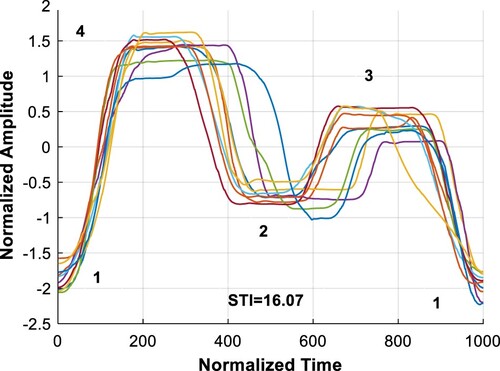Figures & data
Figure 1. Methodological approach to assessing articulatory variability. 10 productions of the sentence “Buy bobby a puppy” from a child with typical development (TD) and a child with developmental language disorder (DLD). The top panels are non-normalized productions. The middle panels are time- and amplitude-normalized. The bottom panels illustrate the spatiotemporal index (STI). Details further explained in the text.

Figure 2. Methodological approach to assessing manual variability. 10 amplitude- and time-normalized productions of a patterned sequence of hand motion performing button presses in a serial reaction time task. The target buttons are 1-4-2-3-1.

Table 1 Summary of profile of manual motor and language abilities that do not show differences (i.e., are spared; left columns) and that do show differences (i.e., are affected; right columns) between children with developmental language disorder (DLD) and their typically developing (TD) peers.
